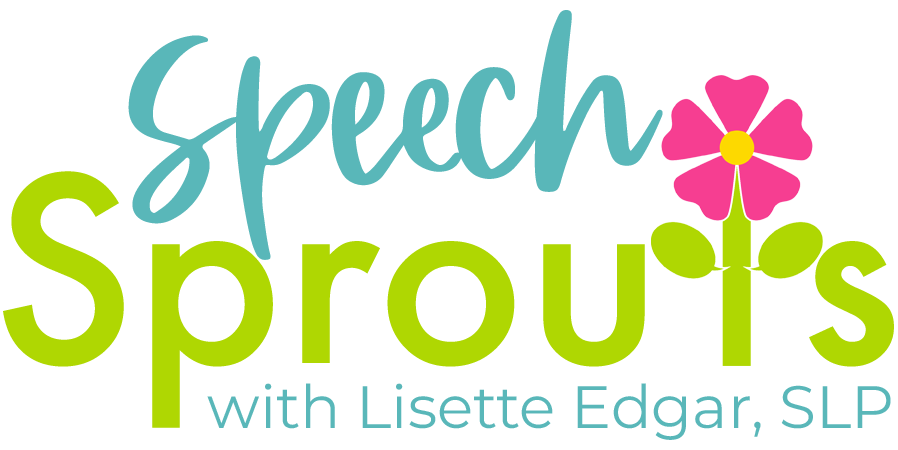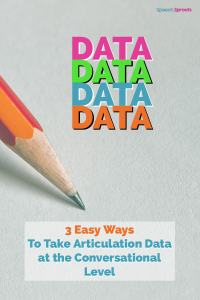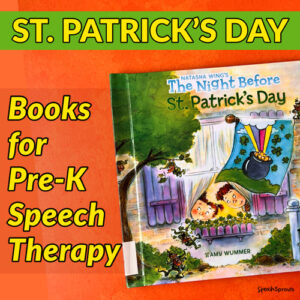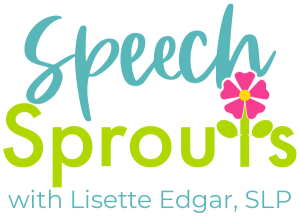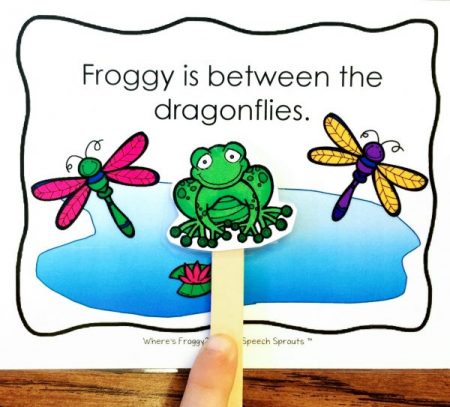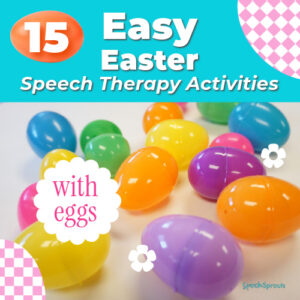
3 Easy Ways to Take Articulation Data at the Conversational Level
Taking articulation data at the conversational level in speech therapy sessions can be a challenge.
Let’s get real… the flow of conversation doesn’t pause after each word or sentence to let you document. Taking data at the word and sentence levels is easy because each attempt is a discrete trial and you have time to record each response before you move on. But that’s not how conversation works.
So how can you take data in conversation?
Try these data-taking methods, and see which one works best for you in conversation.
1. Use tallies instead of pluses and minuses
There’s the tried and true method of recording pluses and minuses, but writing 10 pluses and minuses actually takes more time than marking a tally and more room on your datasheet.
Instead, make a plus column and a minus column, then tally each time you hear the target sound. I stop when we hit 10 or 20 tallies per sound. The trick here is to record in just two columns at a time. Do not take data separately for each word position. By the time a student has progressed to the conversational level, you can track the phoneme, no matter what word position.
2. Count correct/incorrect sentences instead of each word.
You’ll need to write your goals that way for this one. Something like: In conversation, the student will correctly pronounce 80% of sentences that contain the ___ phoneme.
3. The bingo chip method- this one is my favorite!
I lay 10 or 20 bingo chips out in a row in front of the student. I tell the student that every time I hear a sound in conversation that needs to be fixed, I get one chip. Let’s see who has the most chips at the end of the session.
As we talk, when I hear an error, I silently pull one chip towards me. It doesn’t interrupt the flow of conversation and doesn’t require verbal cueing. Plus, it’s amazing how highly motivated students get because they want to keep as many chips as possible. They almost always perk right up when I snag the first chip and they start self-monitoring!
Bonus- at the end of the session, it’s easy to count how many chips your student has left and get a percentage.
Taking data is really not my favorite thing to do, but with a few smart tricks, it can be less intrusive and distracting during your session.
What’s your favorite data-taking method in your speech therapy sessions?
If you have a good one, share in a comment! We’d love to hear it.
Until next time,
Share it:
- Read more about: Articulation
